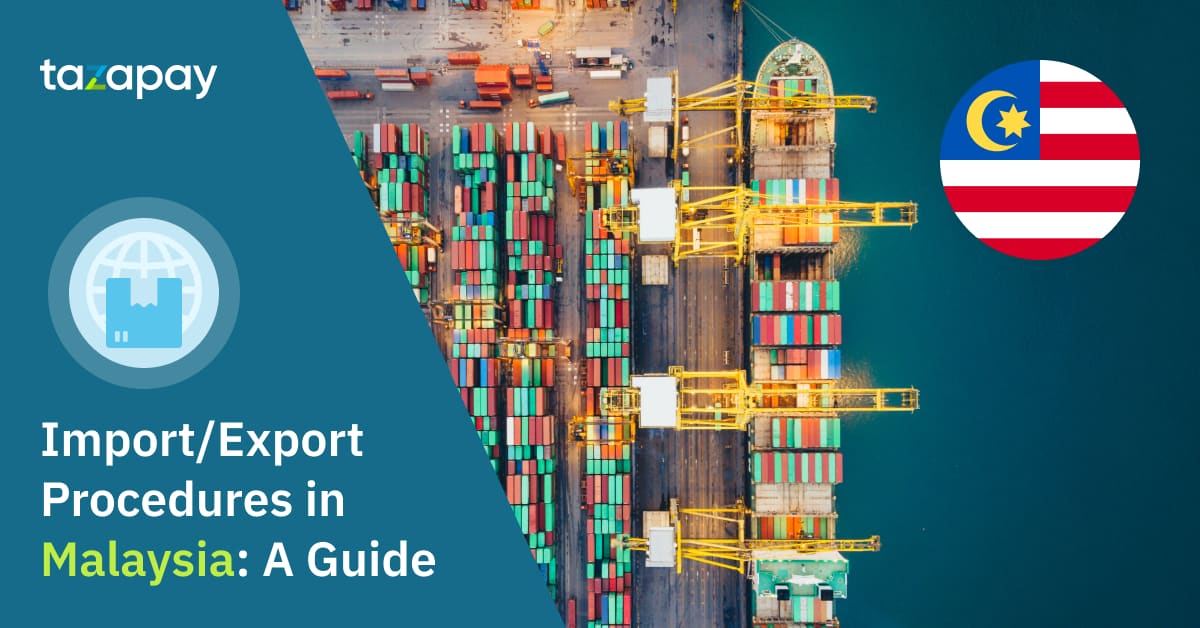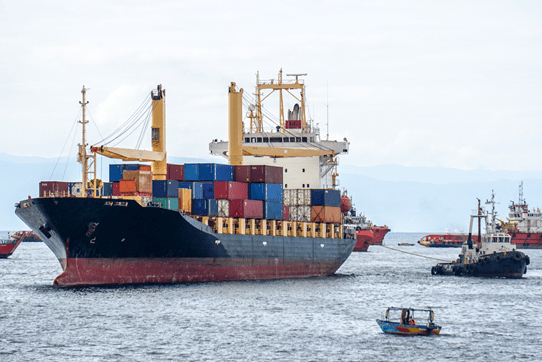- Home
Blog Blog
Export & Import Export & Import
Import Export Procedure in Malaysia - A Guide
Import Export Procedure in Malaysia - A Guide

Malaysia is burrowed between the Andaman Seas and South China, making it a historic trading centre and tactical location for international trade. It also borders Indonesia, Brunei and Singapore via bridge, Thailand by land and the Philippines and Vietnam via sea.
In 2019, Malaysia witnessed a trade of RM 1.8 trillion – the exports of Malaysia amounted to RM 986.4 billion, and imports amounted to RM 849.0 billion worth of goods and services. To encourage global trade, Malaysia has continued to liberalize its import and export regulations, ranking 21 in exports and 25 in imports.

Free Industrial Zones and Free Commercial Zones
Malaysia has 12 FCZs (Free Commercial Zones) and 13 FIZs (Free Industrial Zones). Companies that operate out of these FCZs and FIZs enjoy tariff-free import of equipment, raw material and products.
Free Trade Agreements
Malaysia has six regional FTAs and seven bilateral free trade agreements (FTAs) with India, Chile, Australia, Japan, Chile, Turkey, New Zealand and Pakistan.
To gain from these FTAs, a trader needs to provide a Preferential Certificate of Origin (PCO) along with their goods. Traders need to get clearance from Malaysia’s single window, ‘Dagang.net’, to apply for a PCO. To ease the trade process further, the Malaysian government has created an FTA calculator that equips traders to determine the eligibility of their goods for reduced tariffs.
Import and Export procedure in Malaysia
- • A one-time registration procedure is required to kick-start the import or export process from Malaysia. The traders who intend to export or import must register with the Companies Commission of Malaysia.
- • Once the registration is successful, the company can obtain the import and export license from the Ministry of International Trade and Industry (MITI).
- • The single privatized digital window for all trade procedures (import and export) is Dagang Net.
- The Ministry of International Trade and Industry, MITI, takes care of international trade, productivity, SMEs, industry, investment, automotive, halal industry, development finance institution, steel and strategic trade.
- • The Royal Malaysian Customs Department (RMC or JKDM) administers Malaysia’s indirect tax policy. It also controls the inflow and outflow of goods, customs border enforcement and narcotics felonies.
Documents required for importing and exporting
The Royal Malaysian Customs Department requires mandatory documents to be submitted to ensure export-import clearance. These documents are dependent on the nature of goods being exported and imported. When exporting or importing goods, traders must present the required documents to customs officials.
- • Bill of Lading
- • Packing List
- • Certificate of Origin
- • Customs Export or Import Declaration
- • Commercial Invoice
For goods such as chemicals, animals, coral, wheat, antiques, etc., the traders must obtain extra permissions.
Tariffs and Taxes Involved in Import and Export
Malaysia follows the Harmonized Tariff System (HTS) for imports and exports that don’t originate from the ASEAN members states. However, for goods imported from and exported to ASEAN members, the ASEAN Harmonized Tariff Nomenclature (AHTN) is considered.
Import Tariffs and Taxes
Malaysia levies a tariff rate ranging between 0 and 50 percent – 6.1 percent is the average duty paid on industrial goods imported into Malaysia. Malaysian customs apply higher tariff rates for goods like pork and alcohol, which are considered ‘sinful’ by the country. If goods are adequately produced in Malaysia but still imported, higher tariffs are levied on such goods by RMC.
If the raw material is being imported to manufacture and export the final good, the Malaysian customs significantly reduce the relevant tariffs or duties. It is particularly true for raw materials that are difficult to source domestically.
The Malaysian customs impose a standard goods and service tax (GST) of 6% on imported goods.
Export Tariffs and Taxes
Following ad valorem rates, the RMC applies a 0 to 10% tariff on exported goods. As per the 1976 Malaysia’s Customs Act, 90% of the tariffs are paid on exported goods are eligible for refunds if the goods are originally sourced from imported goods.
With increasing globalization and rising cross-border trade, Escrow platforms such as Omoney are becoming a viable choice for traders in Malaysia. This tripartite agreement is a reliable and secure option for both the sellers and buyers. It is convenient as the local currency – Malaysian Ringgit-can fund the Omoney escrow service. It safeguards the buyers’ interests as it keeps the funds unless goods have been dispatched, and it protects the seller by showing them that the buyer has the intent and ability to pay. It mitigates the risk involved with cross-border payments and provides other benefits such as supplier due diligence, transparency, limited processing fees, no hidden costs, timeline guarantees and dispute resolution.
Category

Export & Import
Import Export Procedure in Malaysia - A Guide
Related Articles

Why Do B2B Businesses Need Escrow Services

Problems Escrow Is Intended to Solve






